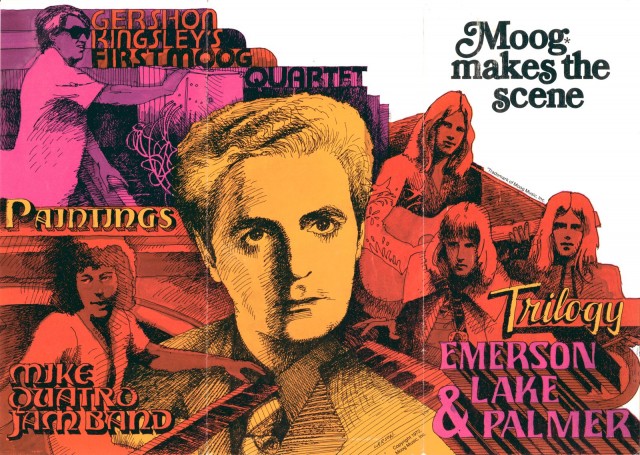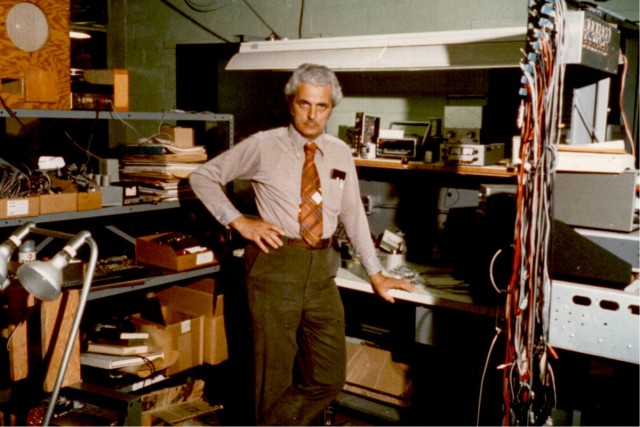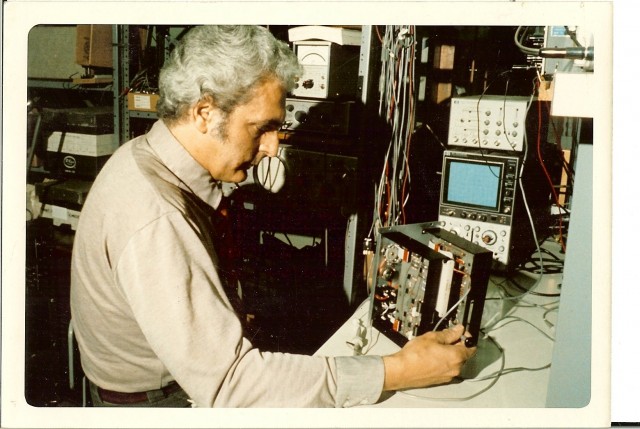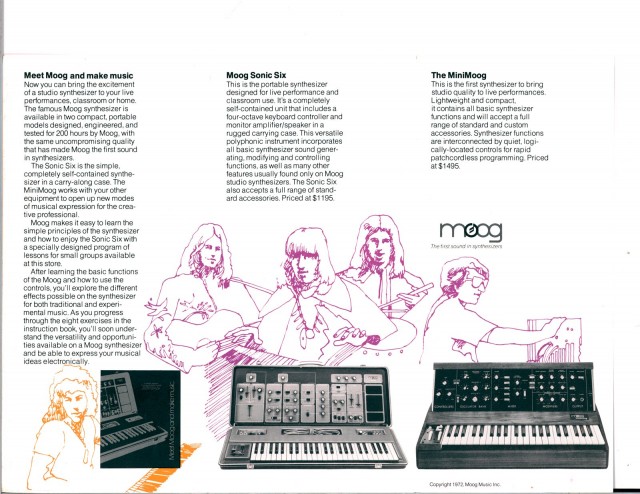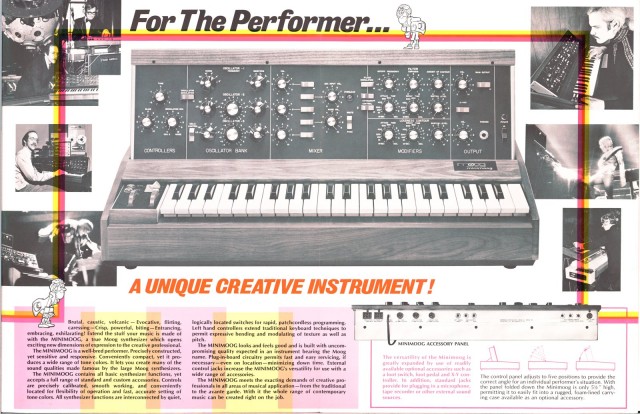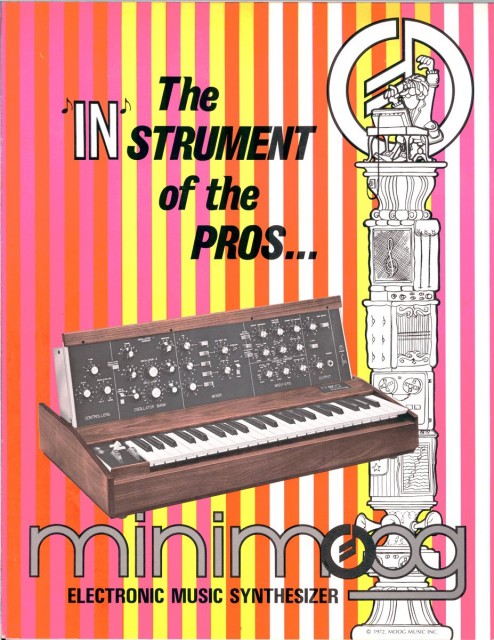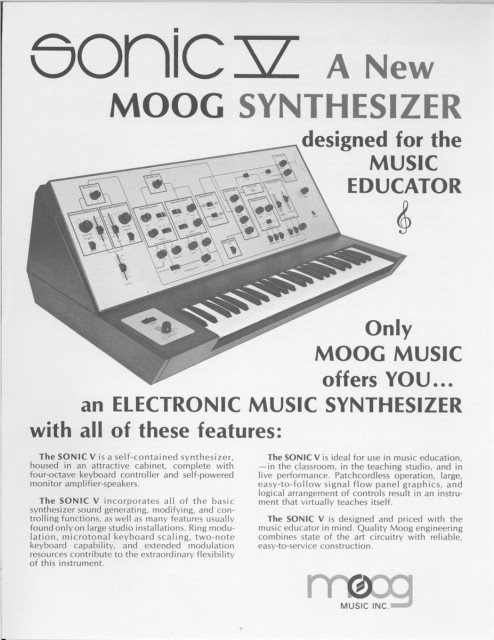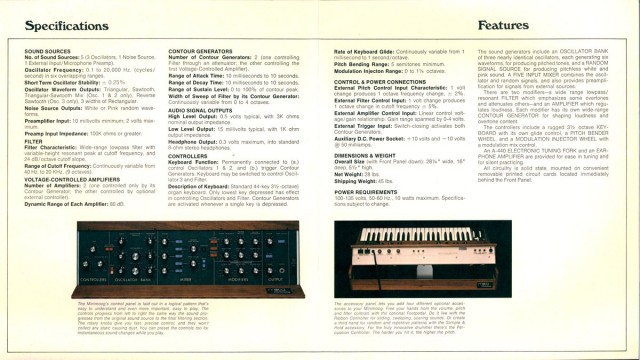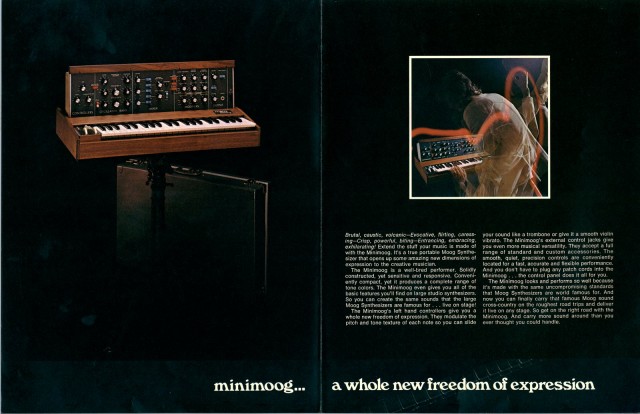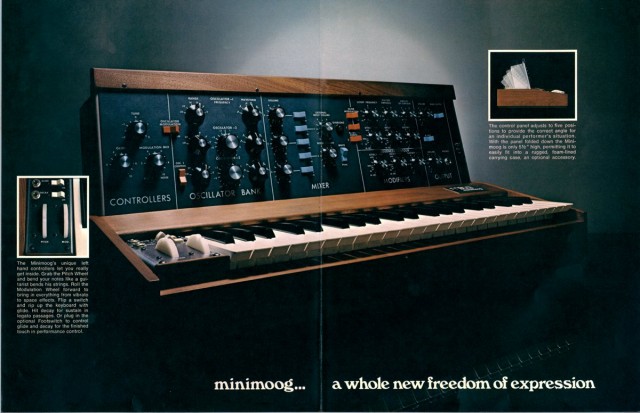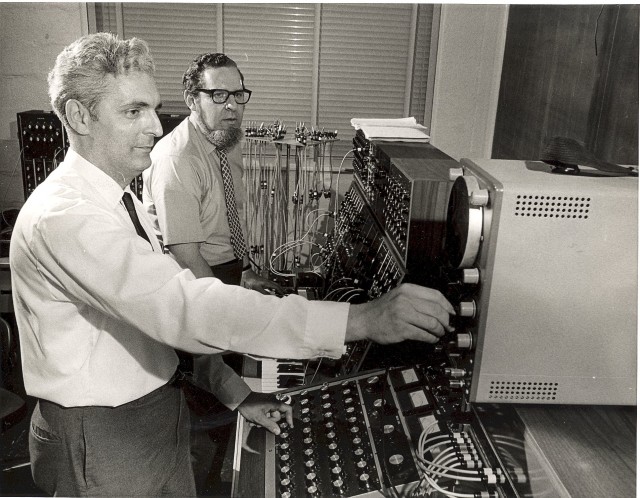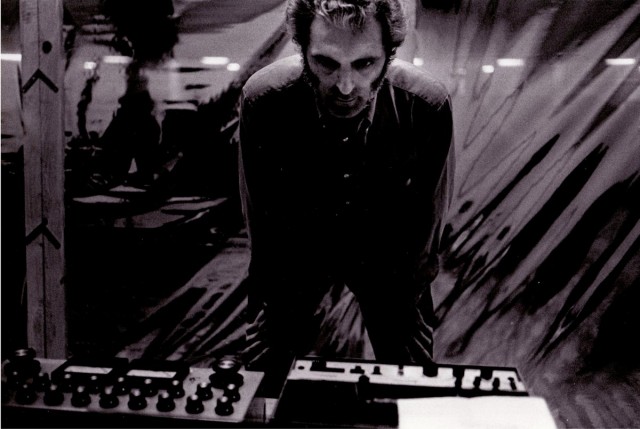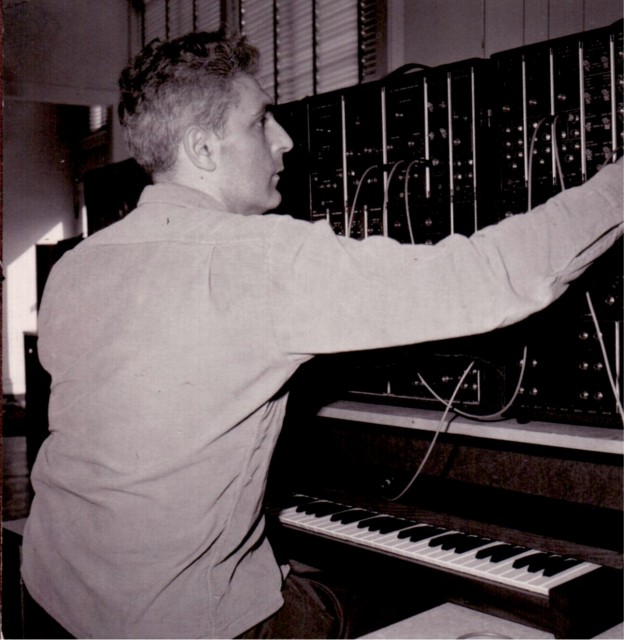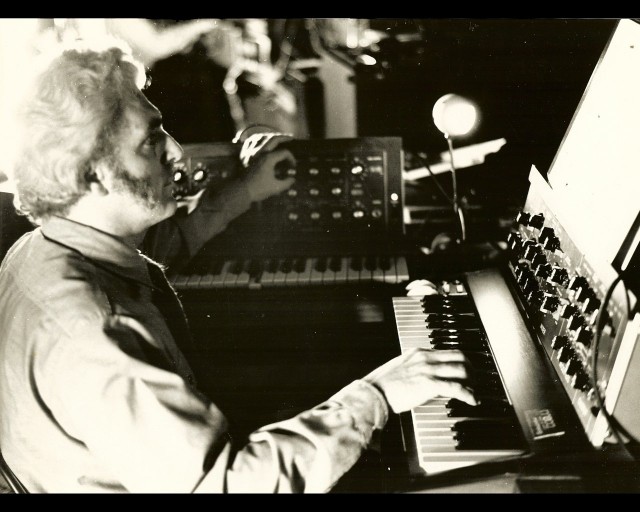Moog made the scene, indeed. In this birthday week for Bob Moog, here’s a gallery looking back at the man and in advertisements, the Minimoog, the keyboard that shaped so much of synthesis to this day.
I could say more, but the images already say so much. Indeed, it seems we’re long overdue for a resurrection of this kind of romance with synthesis and electronic music technology. As I’m also editing remembrances of Max Mathews – a digital counterpart to Moog’s analog breakthroughs – I’d love to have someone do an image like the one on top for Max.
These images are also a reminder of how important the Bob Moog Foundation Archives are. Aside from being the source of these images, BMFA are working hard to get an accurate historical record of Moog and his circle. Moog’s legacy can easily be a catalyst for better understanding all early electronic music history, particularly in the US. Their work is essential and deserves our support:
The Foundation this week unearths an essay from 1951, as Moog writes – for college admission purposes – about what had already impacted his interest in science and learning, at age 17. Thank the Bronx High School of Science, for one.
I’ll let the rest of the images speak for themselves:
http://www.moogfoundation.org/
Supporting the Foundation
All photos courtesy the Bob Moog Foundation Archives, without whom so much of this history would simply be lost.
For more birthday wishes:
Synthtopia asks what you would tell Bob Moog if he were still alive.
Moog Music, via engineer Steve Dunnington, plays happy birthday for him on the instruments of his creation:
And here’s the history of the Minimoog I wrote for Keyboard Magazine last year, in which I sung one unsung hero at R.A. Moog, engineer Bill Hemsath.
Keyboard: The Minimoog at 40, and How A Legend Emerged from Spare Parts Bins
